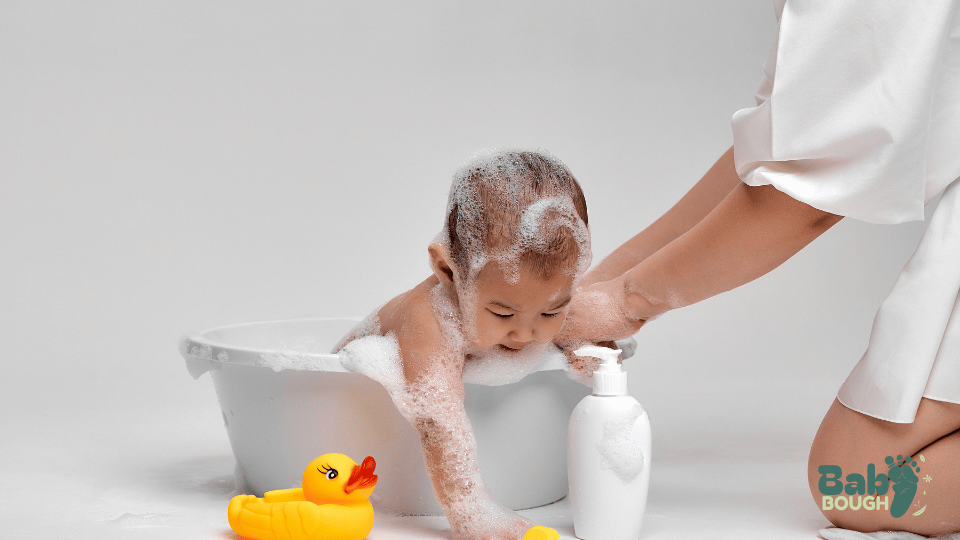
Caring for your baby’s hygiene is an essential part of their overall health and well-being. While cleaning their ears, eyes, and nose may seem straightforward, these delicate areas require gentle handling and the right techniques to avoid irritation or injury. Understanding the best practices for keeping your baby’s ears, eyes, and nose clean will help you care for them confidently and safely. In this blog, we’ll discuss five essential tips for properly and safely cleaning these sensitive areas of your baby’s face.
1. Cleaning Your Baby’s Ears

Your baby’s ears are highly sensitive and don’t require much intervention beyond external cleaning. It’s important to avoid inserting anything into the ear canal, as this can push wax deeper, potentially leading to blockages or damage to the eardrum.
Tips for Safe Cleaning:
- Wipe the outside of the ears gently with a soft, moist washcloth. Clean the area behind the ears as well, as here is where drool or milk may accumulate.
- Leave it alone if there is earwax visible in the ear entrance. Earwax contributes to the protection of the ear canal and spontaneously exits the ear.
- Never use cotton swabs or any other pointed objects to clean inside your baby’s ears, as these can be dangerous.
For any concerns about excess earwax or ear discomfort, consult your pediatrician for guidance.
Learn more about safe ear cleaning for babies here.
2. Cleaning Your Baby’s Eyes

Newborns and young babies can have sticky or crusty eyes, especially if they have blocked tear ducts. Proper cleaning of your baby’s eyes can help maintain their comfort and prevent irritation.
Tips for Safe Cleaning:
- Use a clean, damp cotton ball or soft cloth for each eye. To prevent the spread of any possible illness, carefully wipe from the inner to the outside corner.
- Use warm water (not hot) and avoid using any soap or cleaning solutions near the eyes.
- If your baby wakes up with crusty eyes due to dried tears, applying a warm, damp cloth for a few seconds can help soften the crust before wiping it away.
If your baby’s eyes appear red, or swollen or have a yellow or green discharge, it’s best to consult your pediatrician, as these could be signs of an infection or blocked tear ducts.
3. Cleaning Your Baby’s Nose

Babies often have stuffy or runny noses, making breathing, feeding, and sleeping difficult. Cleaning your baby’s nose can help them feel more comfortable and promote easier breathing.
Tips for Safe Cleaning:
- To gently remove mucus, use a nasal aspirator or bulb syringe. Squeeze the bulb before placing the tip inside the nostril, then slowly release it to draw out mucus.
- Saline drops can help loosen dried mucus before using the bulb syringe. Add one or two drops to each nostril, wait a minute, and then proceed with gentle suction.
- Avoid using cotton swabs or inserting anything deep into the nostril, as this could irritate the delicate nasal passages or push mucus further inside.
Keeping your baby’s nose clear can help prevent discomfort and make feeding and sleep more comfortable.
Discover more about how to safely clean a baby’s nose here.
4. Maintaining Hygiene While Cleaning

Hygiene is key when cleaning any part of your baby’s face, as their immune system is still developing. Always ensure you’re using clean tools and practicing good hand hygiene to minimize the risk of spreading bacteria or causing irritation.
Tips for Safe Practices:
- Before and after cleansing your infant’s face, wash your hands well.
- Use fresh, clean cotton balls or a new section of cloth for each part of your baby’s face to avoid cross-contamination.
- Keep baby-specific tools, like nasal aspirators or soft washcloths, clean and sanitized after each use.
5. Be Gentle and Patient

Babies can be sensitive to touch, especially when cleaning their faces, so it’s important to be gentle and patient. If your baby is fussy, try soothing them with a soft song or wait until they’re calm before starting.
Tips for Gentle Cleaning:
- Use slow, gentle movements and avoid applying too much pressure.
- If your baby resists or becomes distressed, pause and try again later when they’re more relaxed.
- Make the cleaning process a positive experience by talking or singing softly to your baby.
Being gentle and attentive to your baby’s cues can make the process easier for both of you and help build trust as you care for them.
Conclusion
Cleaning your baby’s ears, eyes, and nose may seem intimidating at first, but with the right techniques and a gentle touch, it becomes a manageable part of your baby’s care routine. Remember to avoid inserting anything into the ears or nose, use clean materials, and always consult a pediatrician if you notice signs of infection or discomfort. By following these tips, you can ensure your baby stays comfortable, clean, and healthy as they grow.

